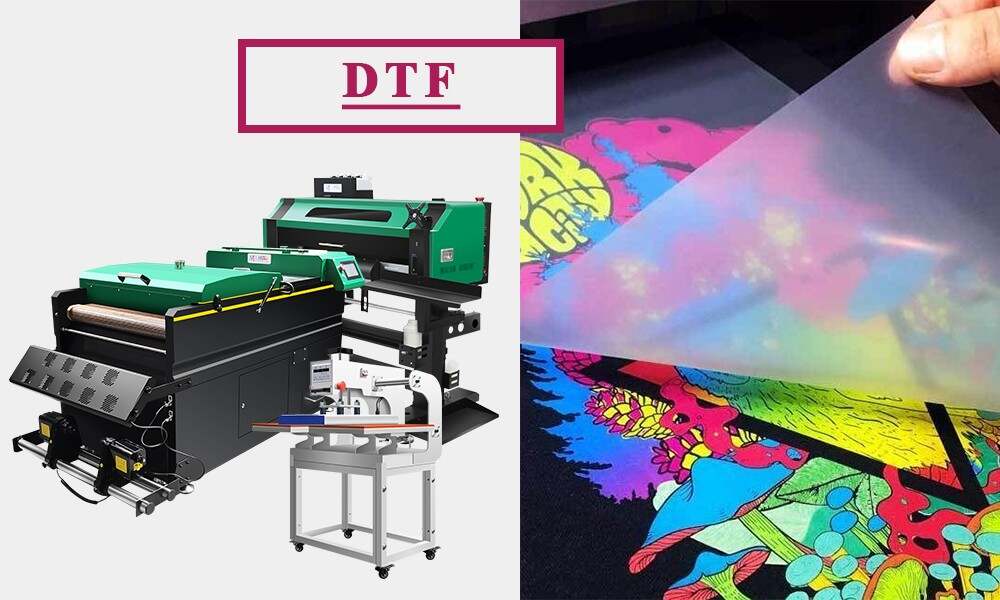DTF Printing Demystified: Every Little Thing You Required to Know About Direct-to-Film
DTF Printing Demystified: Every Little Thing You Required to Know About Direct-to-Film
Blog Article
Mastering DTF Printing: Advice for Achieving Vibrant and Long Lasting Prints
On the planet of textile printing, accomplishing sturdy and vivid prints is a sought after ability that can raise the quality of your output. Mastering DTF (Direct to Movie) printing requires a mix of technical understanding, accuracy, and focus to detail. From selecting the ideal products to tweak print setups and improving post-printing completing methods, there are many factors that can influence the end result of your prints. Recognizing exactly how to browse these intricacies can make all the difference between an average result and a genuinely outstanding one.

DTF Printing Fundamentals
For those new to the globe of textile printing, comprehending the fundamentals of DTF printing is necessary to mastering this cutting-edge method. Direct to Film (DTF) printing is a modern-day technique that involves moving designs from an unique film onto numerous fabrics making use of a warm press. Unlike standard techniques like screen printing, DTF offers benefits such as vibrant colors, complex describing, and the capability to print on diverse products like cotton, polyester, and blends.
The procedure starts by printing the layout on a special DTF movie making use of a suitable printer with CMYK or CMYKW ink collections. When the layout is printed, it is then healed with a warmth press to create a resilient and durable print. DTF printing is recognized for its ability to recreate complex styles with high precision and color precision, making it a popular selection for organizations wanting to create custom-made clothing, marketing things, and more.
Selecting the Right Materials

Similarly essential is the selection of the adhesive powder. The adhesive powder acts as a bonding agent in between the published layout and the material, so it needs to have strong attachment homes to guarantee a resilient and lasting transfer. Various textiles might need various sorts of adhesive powders, so it is crucial to match the powder to the textile kind for ideal results - DTF Printing. By carefully picking the appropriate products for DTF printing, printers can improve the quality, vibrancy, and long life of their prints.
Optimizing Publish Setups
When aiming to accomplish the most effective outcomes in DTF printing, meticulous focus to enhancing print setups is critical for making sure precise and high-grade transfers onto fabrics. When optimizing print my company settings is the resolution, one crucial aspect to think about. Greater resolutions normally cause sharper and much more thorough prints, enhancing the general top quality of the transfer. Additionally, changing the ink thickness can assist guarantee and accomplish vivid colors that the design sticks out on the fabric.
One more crucial setting to enhance is the print speed. Finding the best balance between speed and quality is important. While boosting the rate can enhance effectiveness, see post it may jeopardize the final print's clarity and color saturation. Experimenting with various speeds and observing the results can assist identify the optimal setting for each and every print work - DTF Printing.
Moreover, adjust color accounts and making certain correct shade monitoring are crucial for accomplishing precise and consistent colors throughout different prints. By calibrating color setups and profiles, printers can minimize shade discrepancies and produce consistent results, boosting the total print high quality and client fulfillment.
Preparing Artwork for DTF Printing
Convert the artwork to CMYK shade setting to ensure that the colors equate precisely from display to print. Bear in mind to mirror the last layout before publishing to make certain that it transfers correctly onto the garment. By following these steps and paying close interest to the details, you can prepare artwork that is enhanced for lively and sturdy DTF prints.
Post-Printing Finishing Techniques
Executing effective post-printing finishing techniques is vital to boosting the durability and aesthetic allure of DTF prints on textiles. When the printing process is complete, applying heat to the printed layout is essential (DTF Printing). Warmth not just aids in curing the ink but also ensures that the shades are resilient and lively. A warm press device set at the recommended temperature and stress setups can assist achieve optimal outcomes.
When the movie is eliminated, the print may need added treating time to better set the ink right into the textile. This step assists enhance the washability and durability of the print, ensuring it can hold up against several clean cycles without fading or cracking.
Furthermore, cutting any excess film around the style can offer the final print a tidy and professional appearance. Taking the time to appropriately finish DTF prints post-printing can substantially influence the general high quality and long life of the fabric design.

Verdict
In final thought, grasping DTF printing calls for a thorough understanding of the fundamentals, choosing proper products, maximizing print setups, preparing artwork efficiently, and using post-printing completing methods. By complying with these techniques and ideas, one can attain vivid and sturdy prints that meet their desired quality requirements. Constant method and interest to detail are necessary in accomplishing effective results in DTF printing.
From choosing the best materials to tweak print setups and improving post-printing completing methods, there are various elements that can influence the outcome of your prints. visit their website Unlike traditional approaches like display printing, DTF provides benefits such as lively colors, elaborate detailing, and the capacity to publish on diverse materials like cotton, polyester, and blends.
As soon as the style is printed, it is then treated with a heat press to create a durable and durable print.When aiming to attain the finest results in DTF printing, thorough attention to maximizing print setups is critical for making sure top quality and specific transfers onto fabrics.In conclusion, understanding DTF printing requires an extensive understanding of the basics, picking suitable products, optimizing print setups, preparing artwork properly, and using post-printing ending up techniques.
Report this page